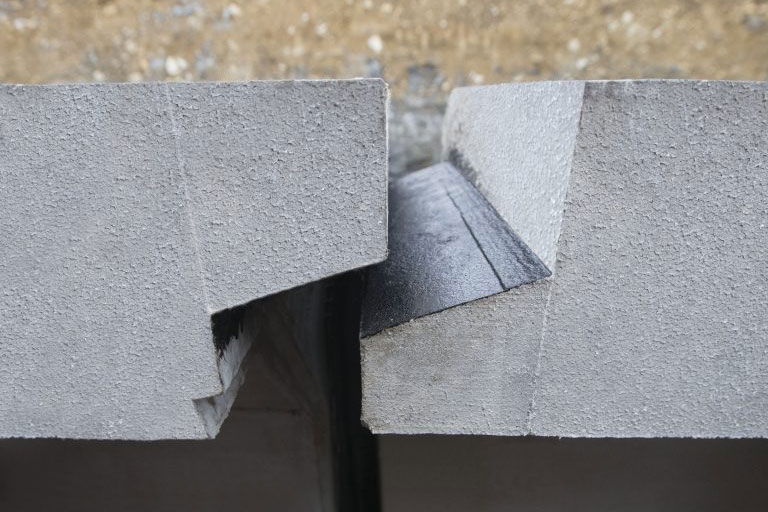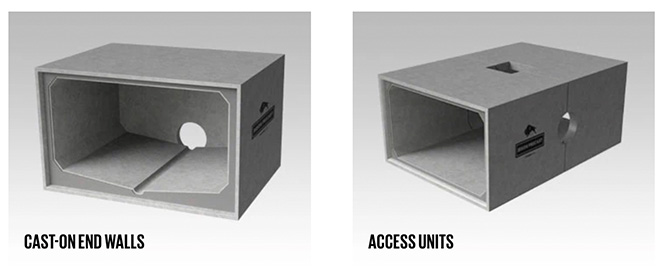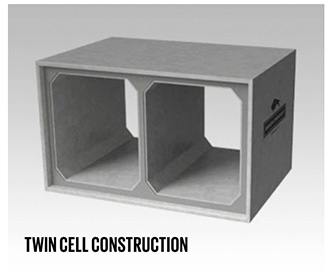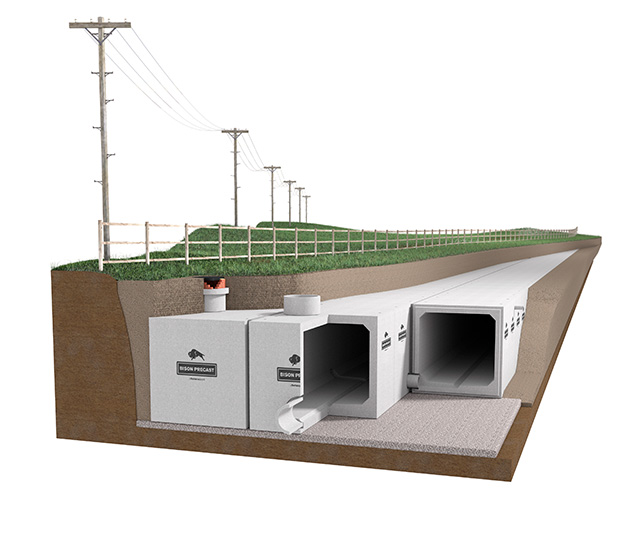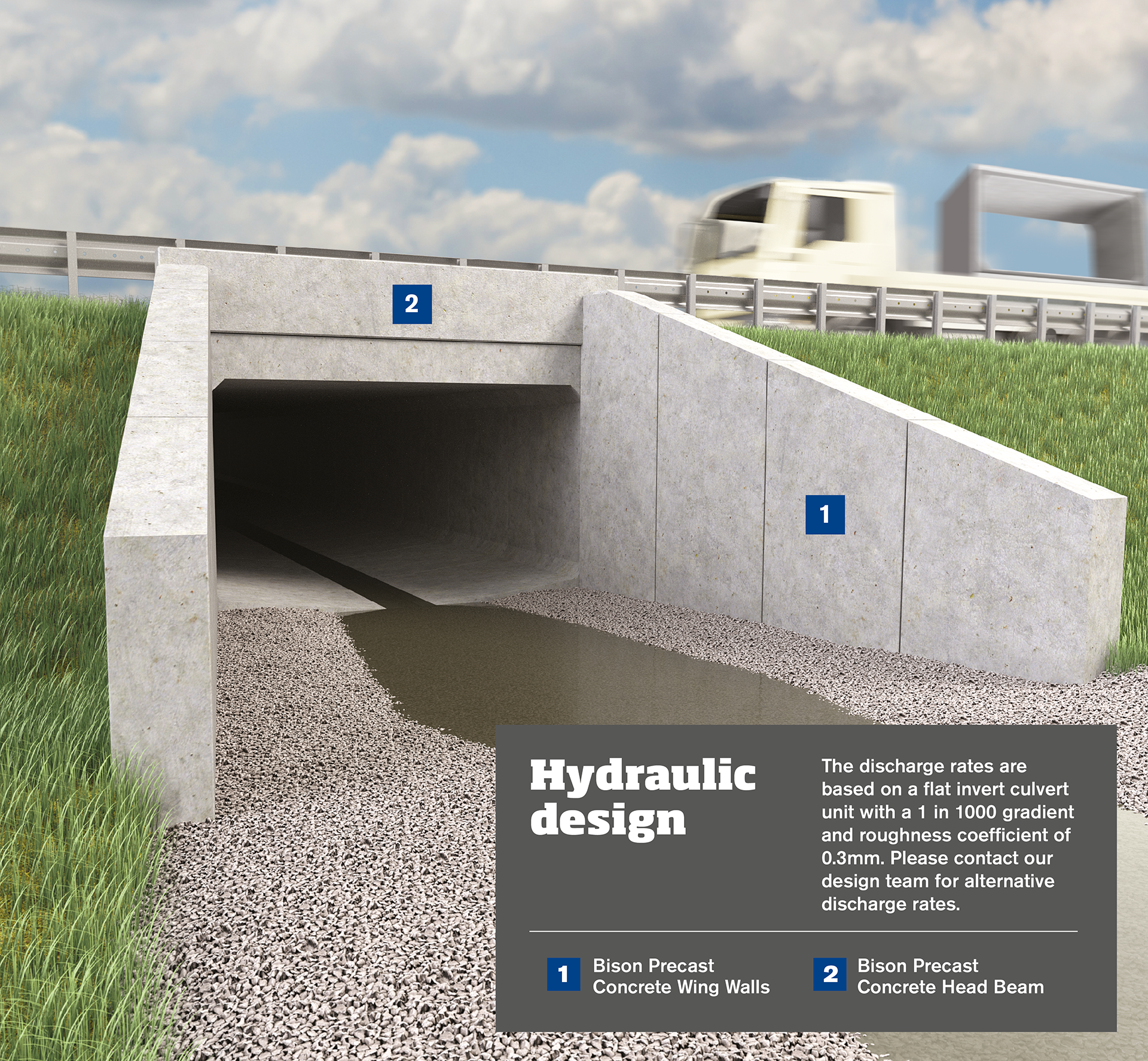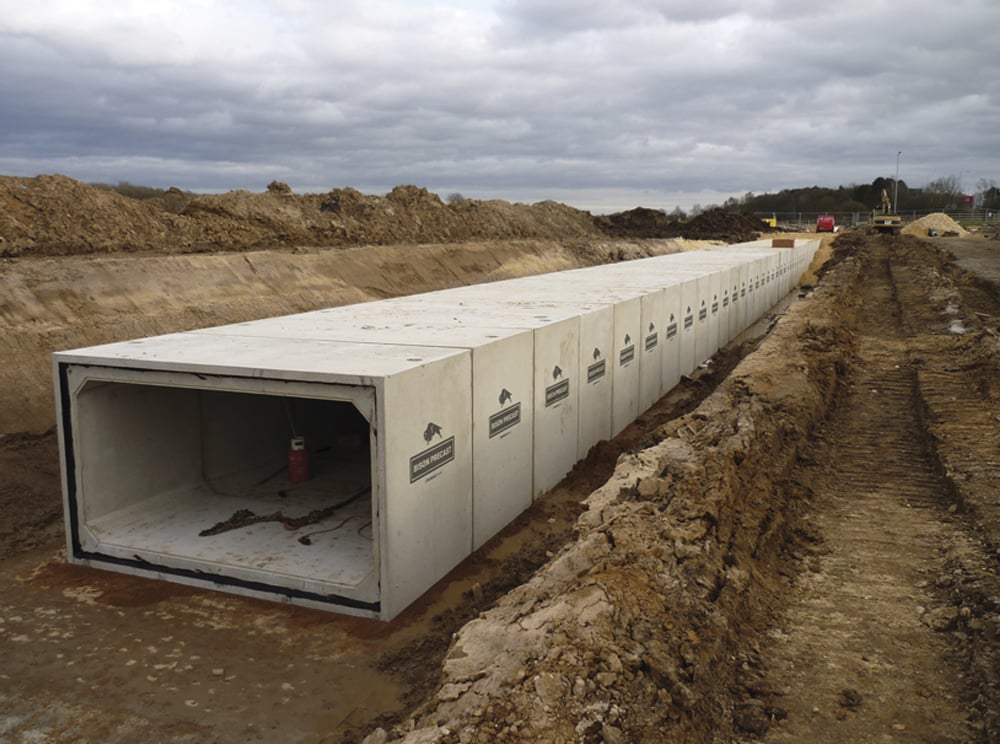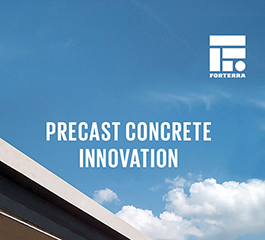Bison Precast box culverts are designed and manufactured to meet a project’s specific scheme requirements. Our in-house design team is on hand to provide immediate guidance and information where required to optimise the design to provide the most economical solution.
In its simplest form, the box culvert system comprises straight units with no access or pipe openings. For longer runs of culvert, special units can be included which incorporate access openings and pipe openings.
The system can be further adapted by including special units with end walls to create attenuation tanks. Gradual changes in direction can also be incorporated with skewed units.
Bison Precast box culverts are available in a wide range of sizes, from 1000mm x 600mm to 6000mm x 3600mm. Non-standard sizes and internal profiles can also be provided, including shaped inverts, dry weather flow channels and units with cross over channels.

